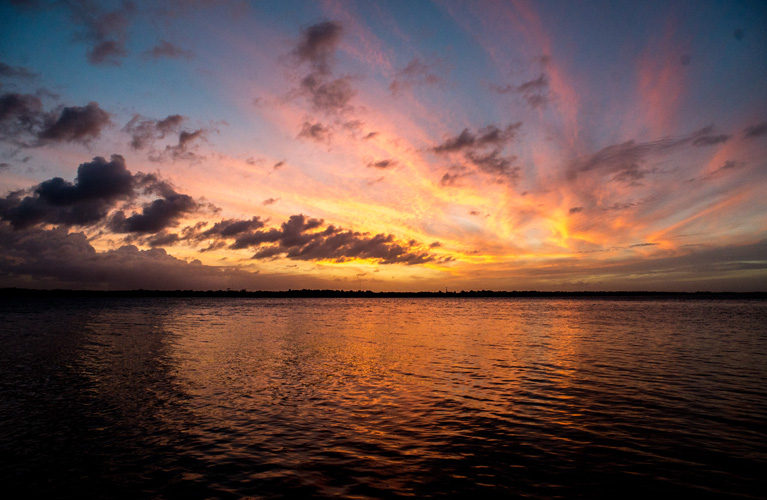
Trying to bring home his message of what climate change means to residents along the Indian River Lagoon, Florida Institute of Technology Professor Ken Lindeman asks people to think like a fisherman:
- When you drop your bait in the water, you notice your hook getting fouled by algae.
- When you visit a favorite sea grass bed to fish for spotted sea trout, you see dead fish floating where the grass used to be.
- Snook, one of the region’s most prized game and food fish species, used to spawn mostly in the summer months. But now they head out to Sebastian Inlet much earlier to reproduce because of rising water temperatures. (Water flowing out the inlet carry fertilized eggs out to sea.)
“The world is getting warmer,” Lindeman, a professor of ocean engineering and marine science, told a packed crowd at the Marine Resources Council in Palm Bay last week. “A lot is created by human activity. We need to re-direct the trend or there will be problems. And we should expect surprises. Climate change is a giant fur ball of surprises.”
Lindeman said the burning of fossil fuels releases thousands of millions of metric tons of carbon dioxide, methane and other greenhouse gases into the atmosphere each year, trapping heat and causing Earth’s temperature to rise nearly two degrees Fahrenheit in just the past century. The five warmest years in recorded history have been the past five, scientists agree.
Most of the trapped heat, the professor said, is in the oceans and estuaries – not the atmosphere – leading to frequent algal blooms, fish kills, the loss of coral and seagrass habitats, and a northward shift in mangrove cover. Rising, warming seas hold less oxygen and become more acidic, he said, weakening the shells of crustaceans, mollusks and bony fishes.
For the Indian River Lagoon, this can mean profound changes, he said.
“Heat and nutrients are not good for estuary waters,” he said. “Changes are more pronounced near the edges of ranges, and the Indian River Lagoon is a transition zone between sub-tropical and temperate. With higher temperatures, organisms can die, or expand or subtract their ranges. You lose more biodiversity.”
With climate change come extreme weather events, Lindeman said, such as droughts and floods which lead to more erosion and surface run-off and to saltwater intrusion into our drinking water supplies.
Lindeman said many tools are available to state, local, and national governments to deal with an anticipated sea level rise of as much as five feet by the end of this century: comprehensive planning and zoning; setbacks and buffers; improving floodplain practices; and limiting growth.
“We have to reduce the amount of growth,” he said. “More development, more growth means more muck, more wastewater.”
But, he added, “I’m an optimist. We can fix things, but we have to move in time. We have to reduce greenhouse gas emissions if we’re going to do anything about this. The rest of the world has demonstrated this is doable. It will save the economy.”



